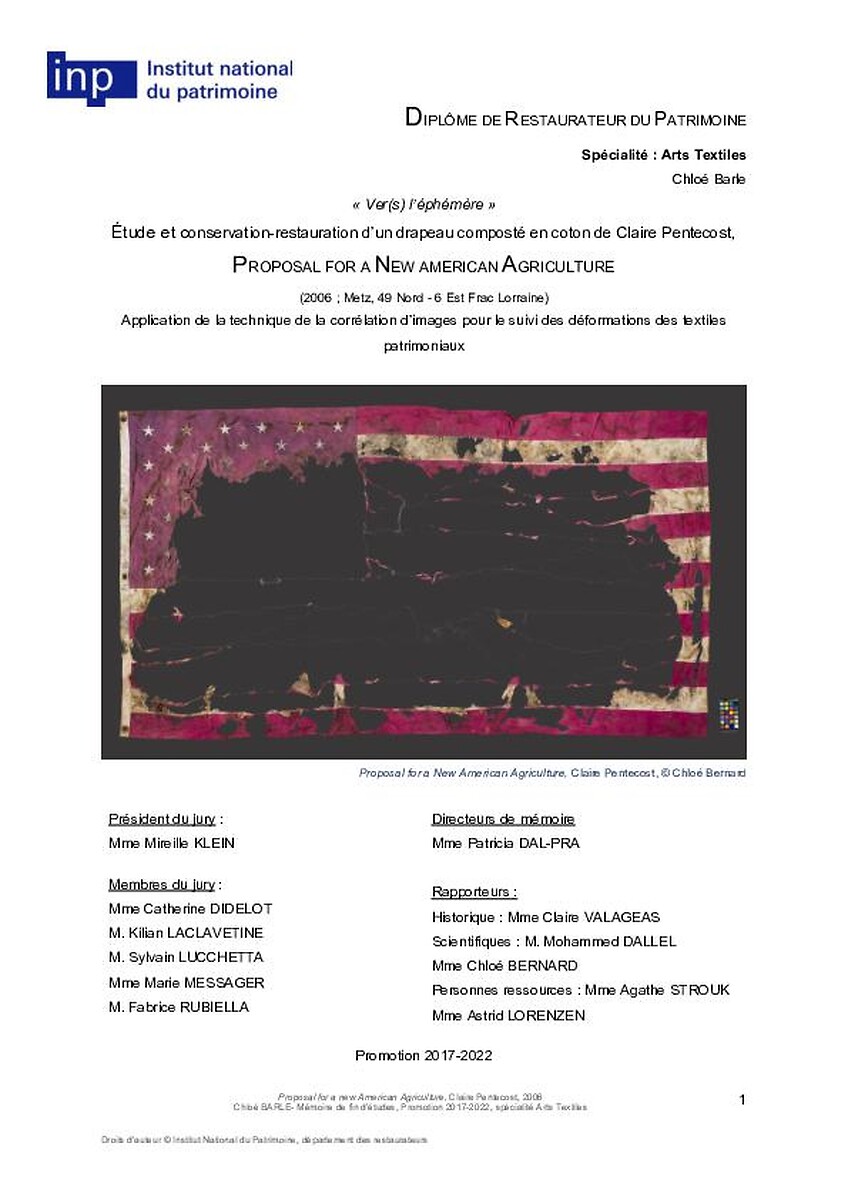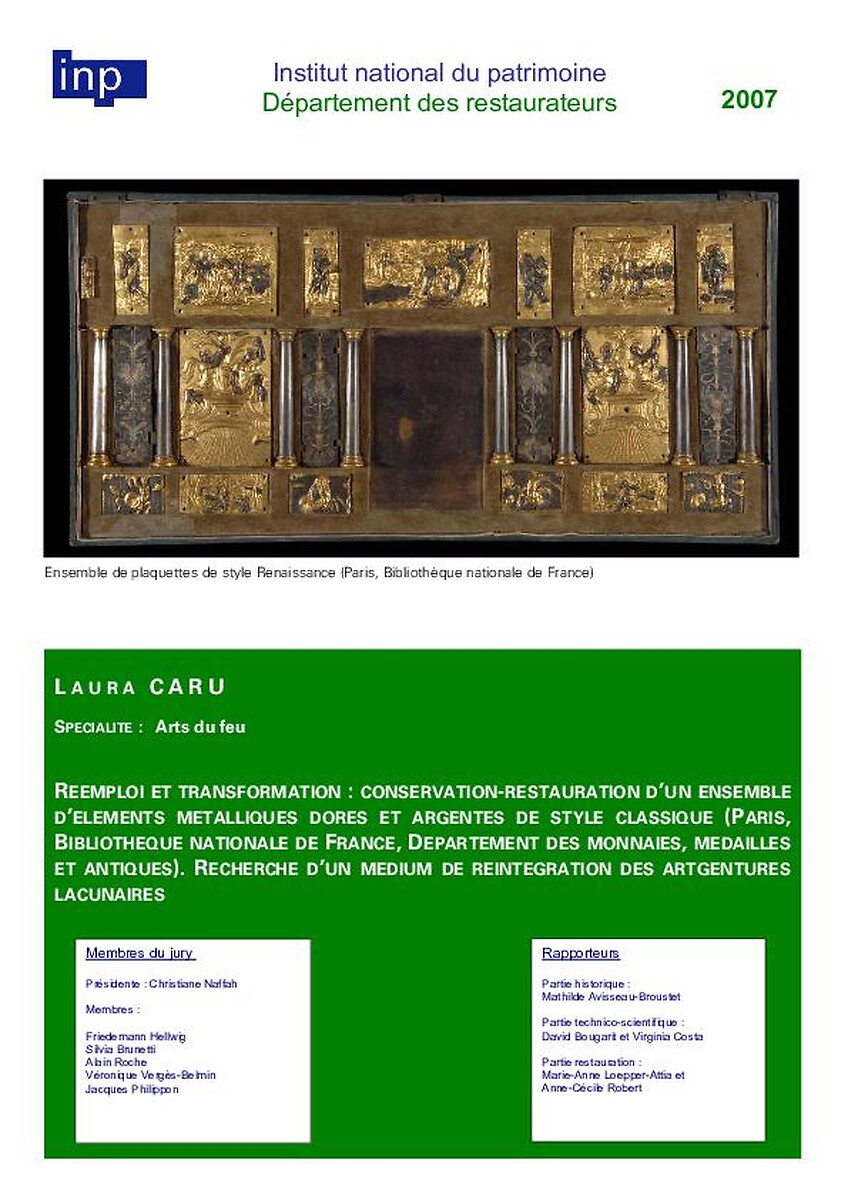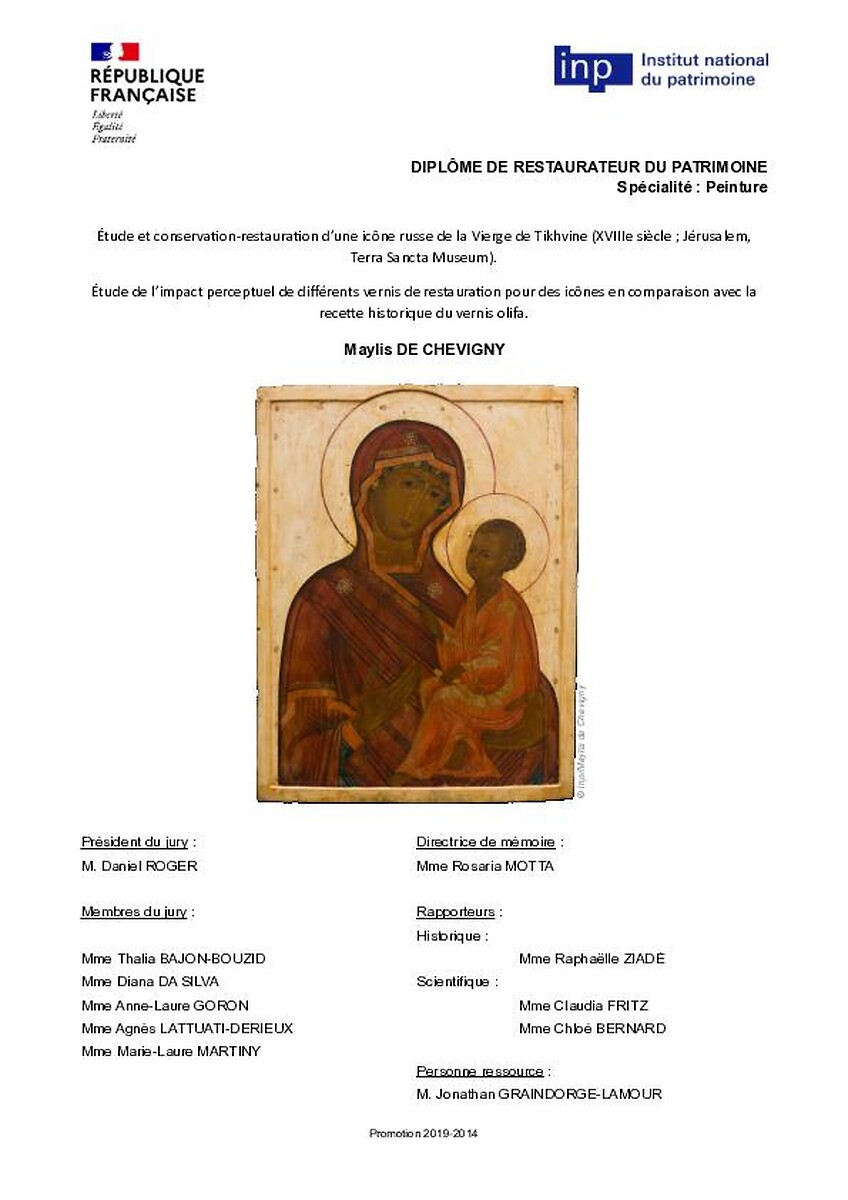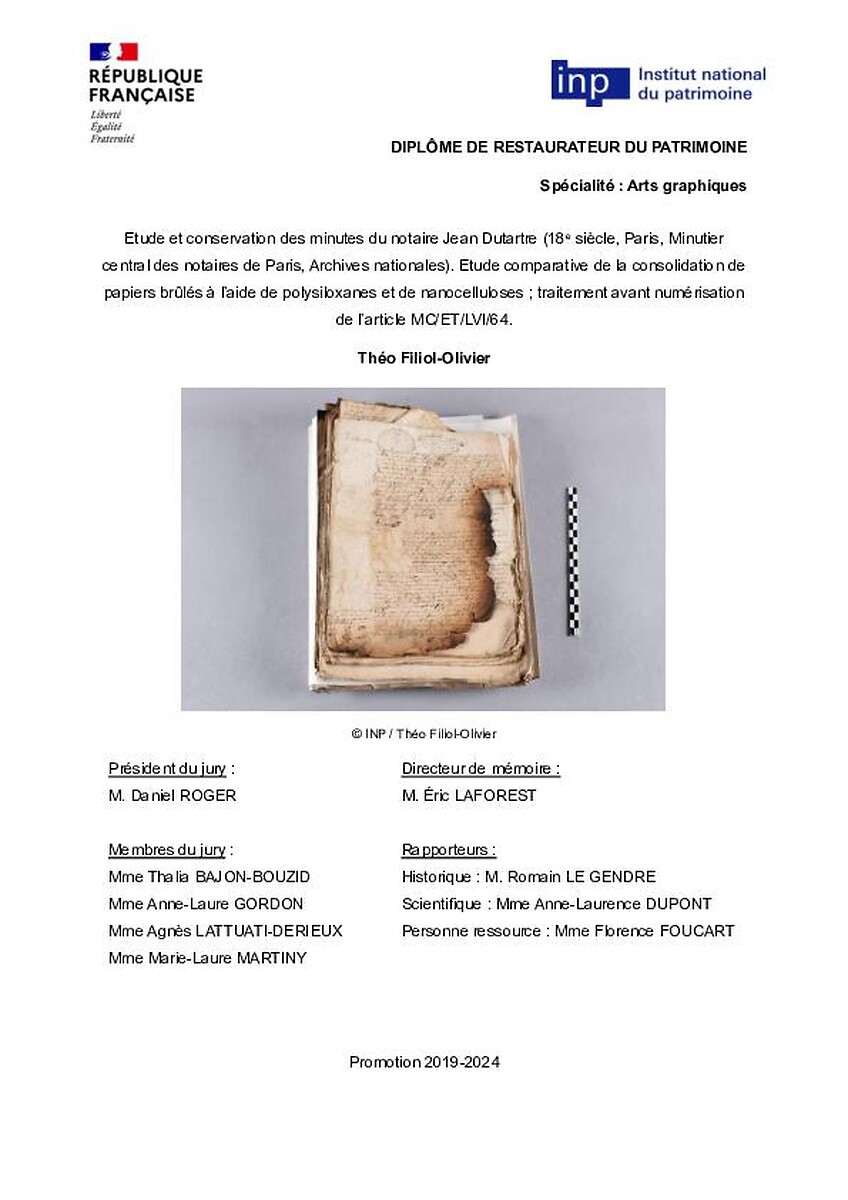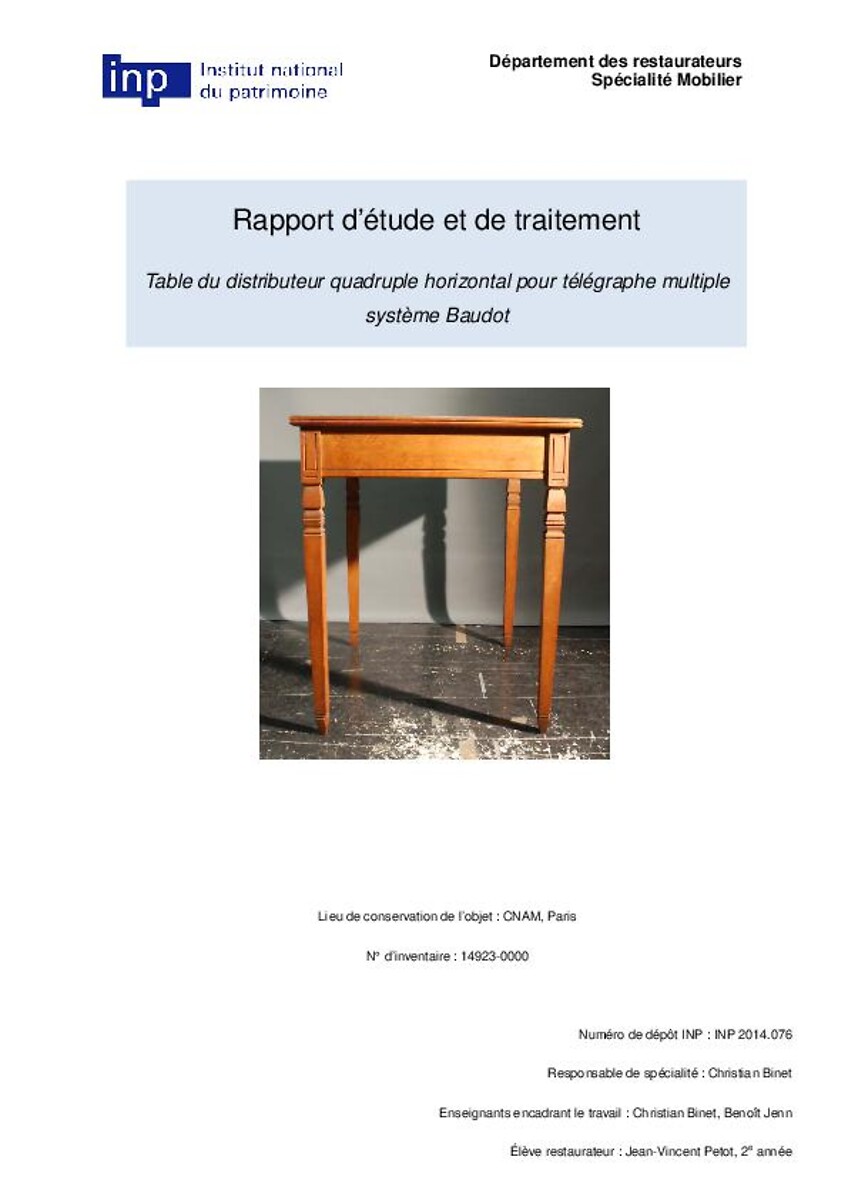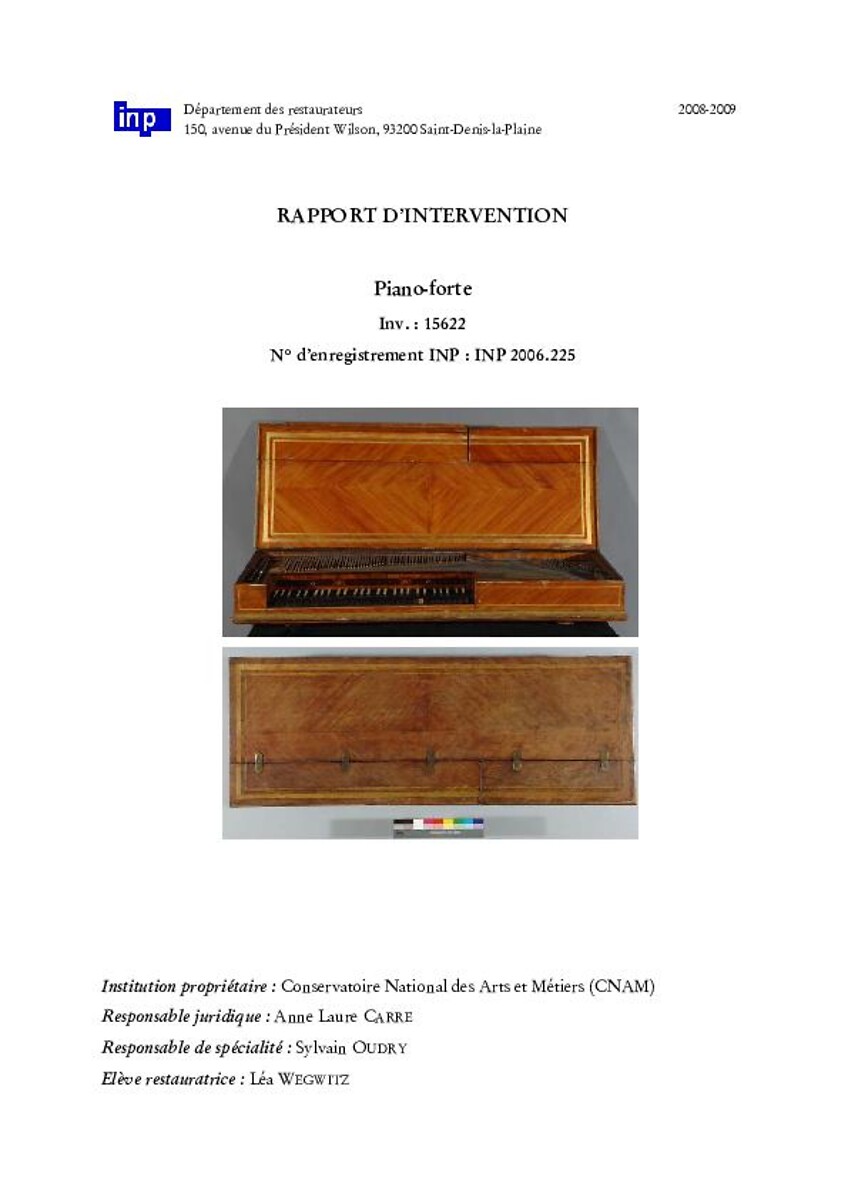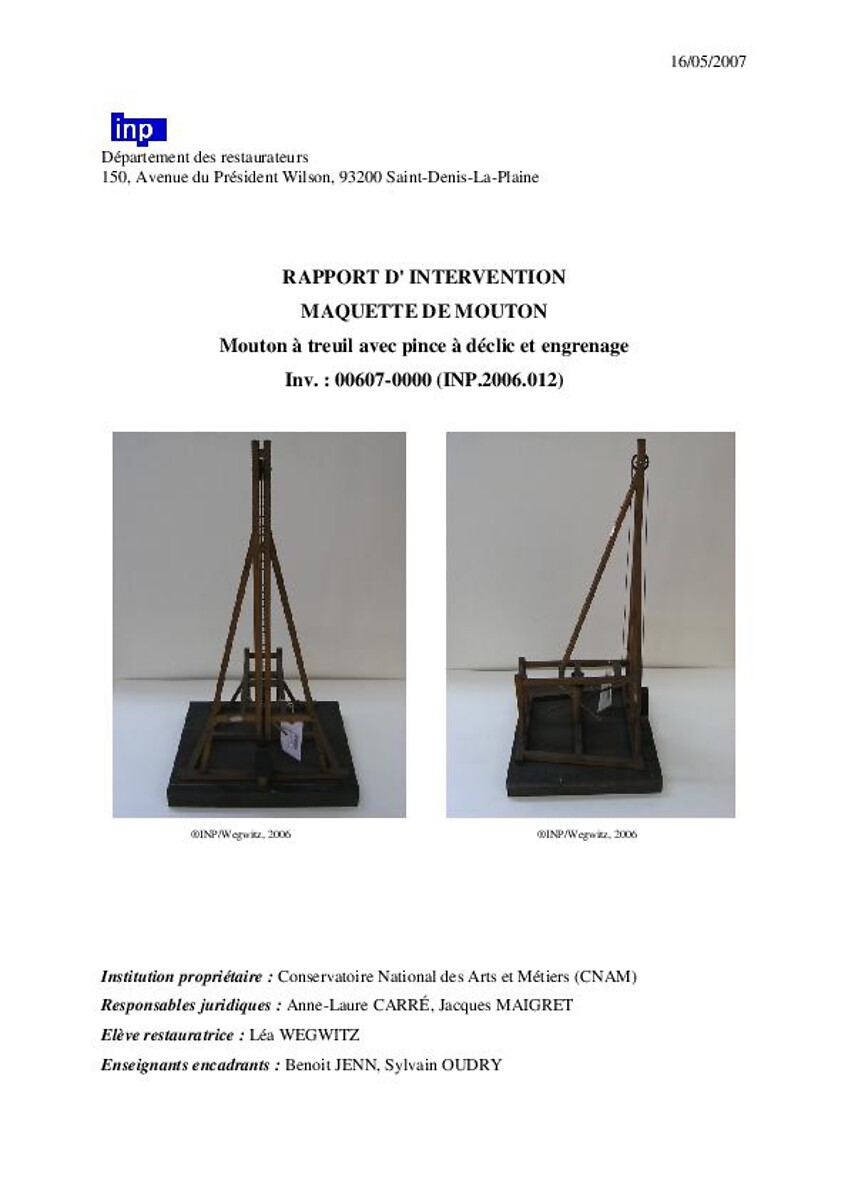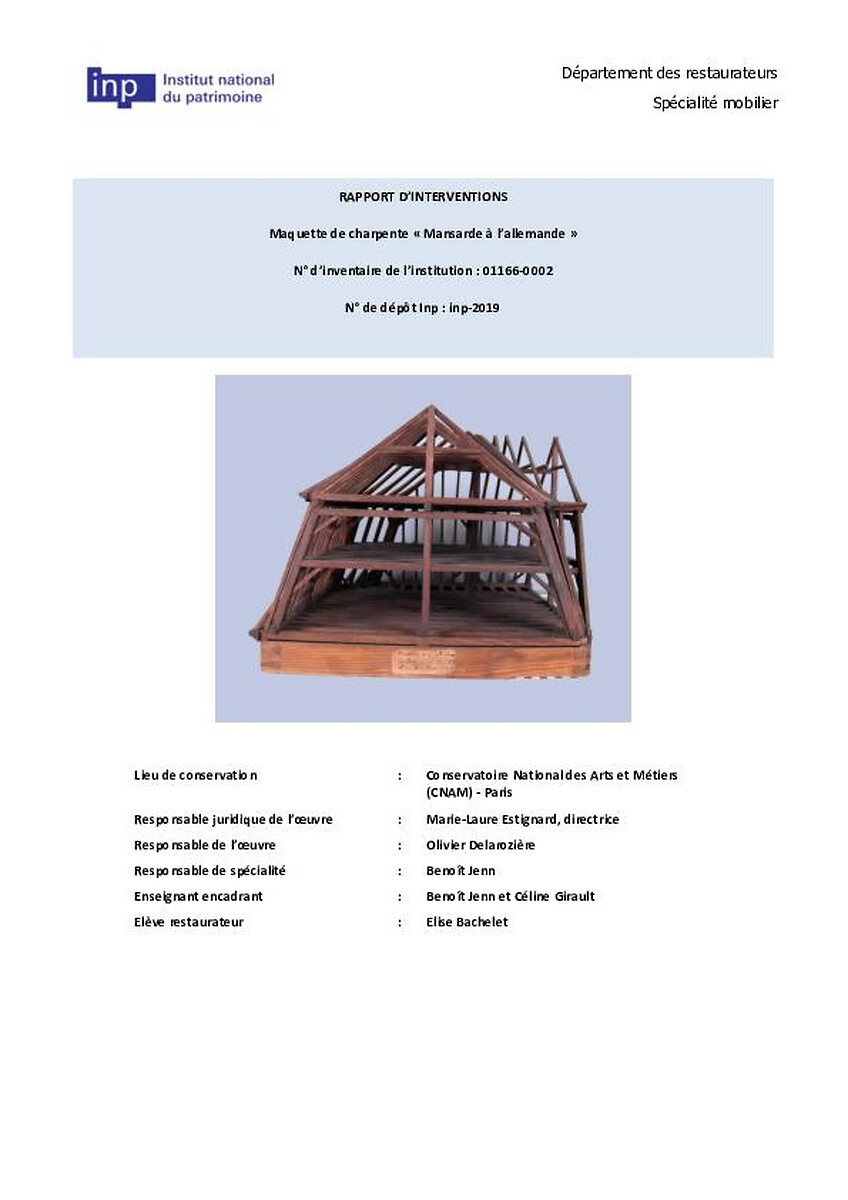Étude et conservation-restauration d’un panneau de meuble (XVème siècle; Paris, musée des Arts décoratifs). Étude de l'utilisation du micro-sablage comme alternative au retrait au scalpel de comblements cireux dans du bois
N° : 32350
application/pdf
- 43,3 Mo
- 270 page(s)
Description / Résumé
Ce mémoire porte sur l’étude et la conservation-restauration d’un panneau de meuble en bois comportant un décor incrusté, conservé au musée des Arts Décoratifs de Paris. Portant un numéro d’inventaire provisoire, très peu de documentation et d’informations sont relatives
à l’objet. L’étude historique menée a permis d’établir une provenance d’origine ibérique et de replacer sa datation au XVème siècle grâce à l’identification du propriétaire des armoiries. La fonction de l’objet a aussi pu être rétablie grâce à une étude technologique, passant de panneau de meuble à élément de table pliante.
Le projet technico-scientifique a porté sur le retrait de comblement cireux en comparant la technique du micro-sablage à celle du dégagement mécanique au scalpel. Cette problématique a été définie en lien avec les problématiques de conservation-restauration de l’objet.
L’enjeu principal du projet de conservation-restauration a été la stabilisation puis la restitution d’une partie du décor en incrustation sur un objet de grandes dimensions. Désormais, l’œuvre possède une cohésion structurelle et visuelle permettant de la rendre exposable.
Résumé en langue(s) étrangère(s)
This master’s thesis focuses on the study and conservation of a furniture panel with inlaid decorations from the Musée des Arts Décoratifs (Paris, France). Identified only by a provisional inventory number, there was very little documentation or information about the object.
The historical study carried out enabled us, thanks in part to the identification of the owner of the coat of arms, to establish its Iberian origin and date it back to the 15th century.
Additionally, the technological study identified the function of the object function as a folding table top.
The scientific project focused on the removal of wax fillings by comparing micro-sandblasting techniques with mechanical removal using a scalpel. This issue was defined in relations to identified
conservation issues.
The main challenge of the conservation project was to stabilize and restore parts of the inlaid decoration on this large object. The folding table top now has a structural and visual cohesion that makes it suitable for display
The historical study carried out enabled us, thanks in part to the identification of the owner of the coat of arms, to establish its Iberian origin and date it back to the 15th century.
Additionally, the technological study identified the function of the object function as a folding table top.
The scientific project focused on the removal of wax fillings by comparing micro-sandblasting techniques with mechanical removal using a scalpel. This issue was defined in relations to identified
conservation issues.
The main challenge of the conservation project was to stabilize and restore parts of the inlaid decoration on this large object. The folding table top now has a structural and visual cohesion that makes it suitable for display
Auteur/artistes/intervenants
Direction scientifique ou pédagogique
Type de document
Institution(s) prêteuse(s) / Institution(s) partenaire(s)
Service producteur INP
Date de publication
Mots-clés
Datation
Type d'intervention
Numéro de gestion de l'œuvre INP
Citer la ressource
Doumergue, Océane, "Étude et conservation-restauration d’un panneau de meuble (XVème siècle; Paris, musée des Arts décoratifs). Étude de l'utilisation du micro-sablage comme alternative au retrait au scalpel de comblements cireux dans du bois", Médiathèque numérique de l'Inp, 30 octobre 2024 (consulté le 19 décembre 2025), https://mediatheque-numerique.inp.fr/documentation-oeuvres/memoires-diplome-restaurateurs-patrimoine/etude-conservation-restauration-dun-panneau-meuble-xveme-siecle-paris-musee-arts-decoratifs-etude-lutilisation-micro-sablage-comme
Type de licence
Tous droits réservés
Conditions d'utilisation
Cette ressource constitue une œuvre protégée par les lois en vigueur sur la propriété intellectuelle, dont les producteurs sont titulaires. Aucune exploitation commerciale, reproduction, représentation, utilisation, adaptation, modification, incorporation, traduction, commercialisation, partielle ou intégrale des éléments de cette ressource ne pourra en être faite sans l’accord préalable et écrit des ayants droit, à l’exception de l’utilisation pour un usage privé sous réserve des dispositions différentes voire plus restrictives du Code de la propriété intellectuelle.



